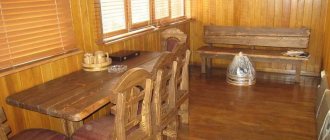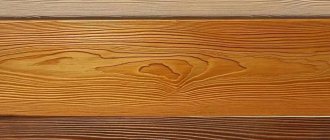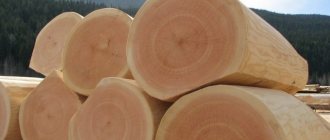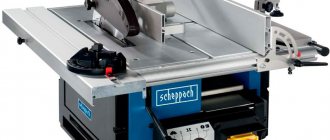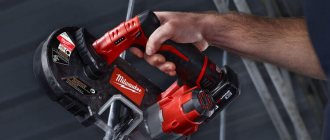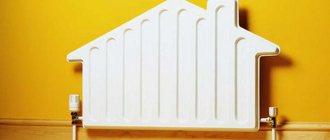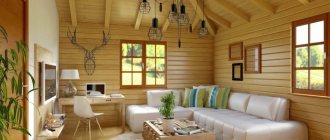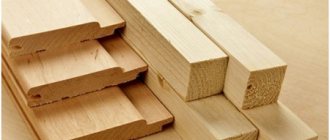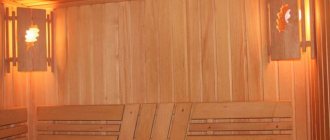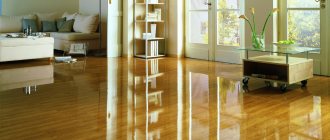The article will talk about which lining to choose for the interior decoration of a house, what types of lamellas exist, what materials they are made from today, how different manufacturing options are used when decorating residential premises. The photos will allow you to clearly see the differences between different types of lining, the video will show how the profiles are installed.
Lining for interior decoration Source pinterest.ph
Any repair work ends with finishing. It is thanks to her that the interior space of a country house acquires the appearance that corresponds to the owners’ ideas about comfort and homeliness. Today, different materials can be used for designated purposes; the modern market offers a huge assortment, but traditionally, many owners of private plots prefer to use lining. It has a number of positive characteristics. They are the ones who determine its popularity.
Advantages of lining as a finishing material
Today, lining is a material that can be classified as a universal type of finishing. It boasts an original design; when assembled, the canvas provides sound and heat insulation. The lamellas available for sale are a ready-made finishing option that does not require additional processing. They are installed quite simply. Anyone with basic construction skills can renovate an entire house on their own.
Light finishing for interior decoration Source kontioturkiye.net
What is lining? These are long strips of different shapes and sizes. They are specially created for interior decoration of residential premises. Today, different types of materials are used as a basis. Each product has its own advantages and disadvantages, they must be taken into account in order to know which lining is best to use for interior decoration of the house.
General characteristics
- Versatility.
- Practicality.
- Durability.
- High thermal insulation and sound insulation properties.
- Wide decorative possibilities.
- Moisture resistance.
- Ease of installation and dismantling.
- Naturalness.
- They do not attract dust.
- Do not cause allergic reactions.
Depending on the type of model and production wood, the characteristics vary, some are dominated by superior properties, others are inferior in practicality. Compared to other coatings, they stand out for their naturalness, interesting external effects and long service life. In addition, the canvas can be renewed by processing with sandpaper and sandpaper to restore aesthetic qualities and extend the service life.
Types of lining
For the traditional manufacturing option, natural wood is usually used. It is an environmentally friendly material. With its help you can create beautiful interiors that will look solid and respectable from the outside. During the production process, the lamellas are well polished, chamfers are made along the edges, which are inserted into each other during assembly. The result is a textured canvas that can be used in its original form, or further decorated with paints and varnish.
The principle of connecting individual elements of the lining Source festima.ru
If the rooms are lined with wood, there is always a special microclimate inside the room. The material has a porous structure; it absorbs excess moisture, and then, with the onset of a dry climate, releases it to the air. Therefore, in houses lined with clapboards, a person feels very comfortable. During operation, the underlayment does not emit harmful chemicals. This quality is especially valuable in families with children and adults with a history of allergies.
The material described is easy to clean and boasts high resistance to mechanical damage. Today, manufacturers use only well-dried wood to make lamellas; in addition, it is coated with antiseptic impregnations and varnishes. They make the lining extremely resistant to almost all harmful influences.
Tenon and groove features of the lock connection Source lesprom.com
Over time, it does not deteriorate from moisture, does not fade in the sun, and is not eaten by bugs and bark beetles. Even mold and fungi settle on it reluctantly. If treated with care, repairs may not be necessary for the next twenty years or more. All this time, unsightly defects will not appear on the surface of the lining.
See also: Catalog of companies that specialize in finishing materials.
Detailed classification
There are different types of lining for interior decoration of a house. Manufacturers divide the described material into four classes.
Products of class “C” are lining of the lowest quality; when buying it, you need to be prepared for the fact that material will arrive on the surface of which there are chips or continuous cracks, knots that cannot fall out, or some other mechanical damage. Such slats are difficult to install and difficult to adjust to each other. Such samples boast a low price; they are usually used for finishing utility rooms.
Low quality “C” class lining Source regionles35.ru
Products of class “B” are lining of average quality. It is of the first category; it differs only in that there are no dents or cracks on it, but there are black knots and knots that match the wood. It is used to decorate walls if the lining is then planned to be painted.
Products of class “A” are linings on the surface of which there are no visible damages, but isolated knots may occur. Slight roughness is acceptable, but there should be no visible blue discoloration, wane, rot or wormholes on the surface of the wood.
“Extra” class products are linings that can boast of impeccable quality. The front side of the lamellas has a perfectly smooth surface, without any signs of damage. It is easy to assemble such material; clamps and staples are used for installation.
Extra class lining Source pomles.ru
Regular and eurolining
The lining owes its name to the need to protect goods from sun and rain that were transported by rail before the introduction of modern materials. The use of wood for lining carriages was the most appropriate, since it is not only cheaper than iron, but also better prevents the greenhouse effect.
Initially, the boards were fastened in the usual way, but over time, to simplify installation and prevent the appearance of cracks in case of any deformation, they began to be made with tongue-and-groove locks. The idea was appreciated and such boards began to be widely used in facing work.
In other languages, there is no such connection to the origin of the name, so when visiting foreign construction stores you should simply look for profiled boards. For their manufacture, the DIN 68126/86 standard is used, developed in Europe and, according to a number of requirements, is more stringent than the local GOST. Accordingly, products exported or simply manufactured according to DIN standards are familiar to domestic buyers as Eurolining.
Builders make a large number of complaints about ordinary lining, made according to Soviet standards, both in terms of characteristics and ease of installation. Humidity of 20-25% is too high - with a board thickness of 20 mm, deformations often occur during drying, which small locks cannot cope with, trying to jump out of the groove. The fleecy surface and the number of knots, which are not particularly controlled, make not only the shape, but also the quality of such products unimportant.
Profile of a standard lining manufactured in accordance with GOST.
As a result, eurolining, despite the price, is much more readily used by builders due to its advantages:
- A more thoughtful shape: a large tenon is not afraid of deformation, optimal thickness and width of the lamellas (12.5 and 88 (without the tenon, with it – 96) mm, respectively), the presence of ventilation grooves, the ability to choose a profile pattern.
- No lint is allowed on the front side, careful processing of the tongue and groove lock for ease of installation.
- All eurolining is dried to a moisture content of 10-15%, which negates the possibility of its deformation and the likelihood of bugs or rot. Dry boards are easier to store, process and care for during use.
- After cutting the wood, the boards, depending on their quality, are divided into at least four grades, taking into account manufacturing defects and the condition of the wood itself.
Video description
The video explains how to choose a lining and what technical characteristics to pay attention to:
Profile Features
The technical characteristics of the lining are changing all the time; manufacturers, modernizing equipment, produce new samples that differ from each other in different cross-sectional profiles. Taking into account this indicator, the assortment includes:
- eurolining;
- lining-calm;
- block house;
- soft line;
- American.
Eurolining for interior decoration Source les-archangelska.ru
Types of lining profiles
Manufacturers produce different types of profiles, which differ in the type of locks, the size and shape of the back and front sides, and the type or type. If you are planning to decorate the interior of your car, it is better to choose the design of the room in advance - this will help you decide on the selection of the profile.
Standard class plate is often suitable for indoor use
Standard. The basic profile is trapezoidal, with the front side parallel to the back. There are two cross cuts on the back to prevent transportation. One of the edges of the rail is equipped with a corner, the other with a protrusion, together they form a “spike groove” type connection.
Eurolining is one of the most popular types of lining
Eurovision. They are distinguished by the presence of a corner connection and a longer “shelf”, thanks to which the joints between the panels are more noticeable. The home's interior features European millwork, which benefits from the clever design of the spires. There are vents at the rear of the track that are designed to detect excess moisture and prevent crown formation.
The smooth lines of the Softline car distinguish this type of profile from others
A fine line. This type of implant has rounded corners, which reduces the likelihood of runs and netting. But due to the elongated “shelf”, the seams between the panels are very noticeable. Softline Carrier is recommended to be used to decorate bathhouses and canopies.
“Brick” panels are widely used not only for finishing bathrooms and saunas
Calm. The characteristic profile of the profile is the absence of a bevel at the tenon, which makes the joints almost invisible after installation. The effect was used for cladding the façade to simulate “under bruises.” This allows you to increase the thickness of the panels - up to 25 mm.
The Calm Button is one of the most popular profile types.
Landxayc. One of the most expensive types of profiles, since their front side is subject to additional processing to create complex options. Also, using hot stamping you can get a panel with the effect of wood carving. A Landheads vehicle was used for interior decoration of the premises.
Blockxayc. The front side of the profile is rounded, which in its finished form will create the effect of wrapping cylindrical logs. Most often used to decorate the facades of buildings.
Imitation “under a cylindrical barrel” allows you to create original interiors
America. The main difference between the profile is that the back and front surfaces are not parallel to each other. The difference in thickness can be 6-8 mm, and the slope can be 5 degrees. 3a this creates the effect of installing boards on the outside or simulating cladding with siding panels.
American
Useful tips for choosing lining
Manufacturers offer a wide range of described materials; it is difficult to decide on the purchase of any one material. In order not to regret your choice later, you need to be more careful when choosing a specific product. Experts advise paying attention to:
For the presence or absence of manufacturing defects. It is important not to be lazy, open the entire package and check the quality of the front side of each board. It should be perfectly flat, without any curvature. If the lamella shows signs of deformation, you should refuse to purchase it. If this is not done, then a problem will arise during installation, which will be extremely difficult to eliminate.
On the quality of execution of combs and puzzles. If they have cracks, chips, or knots, you should not buy such material.
Cracks on a poorly level surface Source elka-palka.ru
Manufacturers offer different options for manufacturing the length of the processed board (from 30 cm to 6 meters). The width also varies. It is important to understand that the wider the lining, the more susceptible it is to deformation. This drawback can be eliminated if you take the sheathing step more often and fasten it more often.
Wooden lining can be combined with other finishing options. Options look good when the walls are partially covered with clapboard, partially decorated with wallpaper or covered with textured plaster.
It is important to purchase varieties of the material described, taking into account the chosen style direction.
Varieties
For the production of wood planks, different tree species, types of raw materials, and forms of surface treatment are used, which determines the existence of different types of products. It is much easier to choose products if you have an idea of the specific features of the material, its technical characteristics, and expected operating conditions.
When determining the grade of products, foreign manufacturers rely on European standards, while domestic manufacturers rely on both European and their own standards, developed taking into account the requirements of GOST.
Extra
The best products are designated as extra. Old-school consumers call this category premium. The highest grade lining has practically no defects: worm or ash spots, blue stains, sprouts, areas with rot. In most cases, spliced material belongs to this category, because in solid wood, be it linden, larch or other conifers, it is extremely difficult to find a large amount of ideal raw materials.
The highest grade lamellas have an absolutely smooth surface without knots, stains, chips, or cracks; it is vacuum packed in film to prevent damage during transportation and storage. Products should be secured very carefully using special adhesives. Properly installed cladding, coated with good varnish, has an elite appearance and is a worthy decoration of expensive interiors.
A (first)
According to the long-established classification, the next group of products can be called 1st grade products. Nowadays it is usually denoted by the letter A. In a minimal amount, it can have microscopic cracks and resin inclusions that do not have a through character.
The size of the knots is regulated; the diameter cannot exceed 15 mm, and the knots must not be sprouted. The maximum permissible size of black knots is 7 mm. Products of this type are most often used for cladding residential and administrative premises; The formation of a decent appearance of a high-quality surface can be completed by treating it with wax, oil or simply varnish.
B (second)
Grade B lamellas are usually called 2nd grade lining, which informs the buyer in advance about the possible presence of small defects. In each section with a length reaching 60 cm, there may be small flaws: cracks, dents, chips, with a total area of no more than 3 cm. The size of knots and bluish spots is also limited and should not occupy more than 10% of the plank area.
It is important to know that all of the indicated defects in 2nd grade products cannot have a through form. This should be noted during inspection. Installation of such lining requires experience, because the ends may contain small areas with unplaned wood. They do not interfere with joining and do not spoil the appearance of the cladding if installed correctly. Small flaws in the front surface are masked by grouting and painting.
Video description
In the video, the master talks about how he assembled the interior of the bathhouse from lining and stone:
To decorate living rooms with windows facing south, designers recommend choosing lining in dark shades of brown. To make it look good, it is important to have good artificial lighting; experts advise simply whitewashing and painting the ceilings. If you leave one of the walls in the room painted and cover the remaining three with wood, the design will only benefit from this. On the contrary, you can cover only one accent wall with clapboard, and wallpaper the other three. It will also look very good.
An interesting option for a combined design Source 1povagonke.ru
If you need to use lining to decorate a bedroom or kitchen, it is better to use light-colored lining for painting. If you paint it on top with white or light gray translucent enamel, you will get a cozy space. Light textiles with spot bright accents (tablecloths, bedspreads) go well with it.
In the bedroom, designers recommend finishing the wall with clapboard, next to which the head of the bed will then be placed. For this purpose, lining of any shape, any color is suitable. The main thing is that it is then linked to the overall range of interior content and decor.
Conclusion
By choosing high-quality lining made from expensive wood for work, you can turn the room into a real palace. This material is perfect for any room, tolerates painting or varnishing well, has a stunning appearance and can be installed in a short time. At the same time, it is one of the most environmentally friendly and has a pleasant smell.
Wooden lining will always be one of the most worthy and sought-after materials for interior decoration.
Dimensions of the lining: centimeters do matter! Read here.
